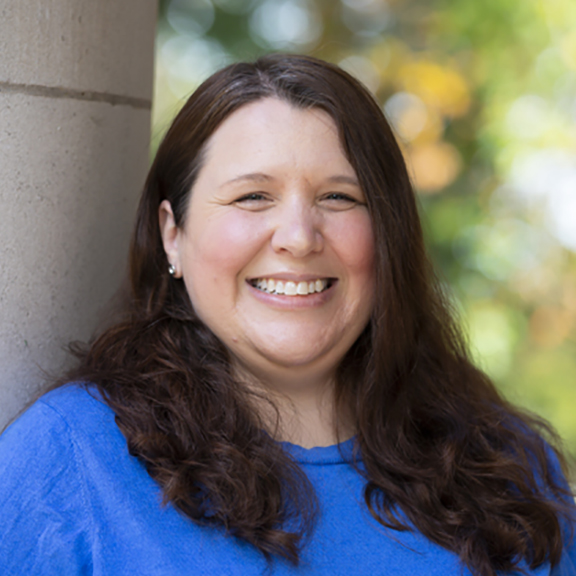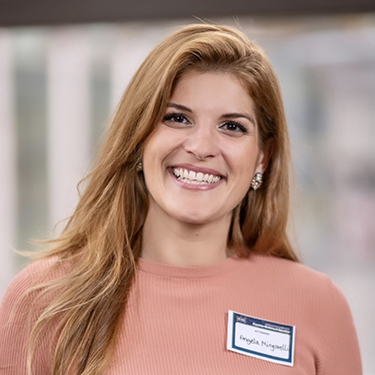Steen writes:
Voinnet investigation concludes
Conclusions/language differ somewhat. The ETH Zurich press release provides some details, the CNRS one very few.
http://www2.cnrs.fr/en/2593.htm
https://www.ethz.ch/en/news-and-events/eth-news/news/2015/07/investigation-result-voinnet.html
Drake writes:
Hello Professors (Dr. Dove qualifies in my book),
All of you seem to be confused as to why someone would falsify data. I want to bring up one more motivating factor that you failed to mention.
Too many graduate students and postdocs are put in situations where they are desperate and see no other way out, unless they get results that keep the principal investigator happy. The situation is often more dire for those that come from different countries.
I’ve met a postdoc that worked three years on a project, but the principal investigator refused to publish any of the results because the in vivo data was not substantial enough to warrant a high impact publication. The postdoc had to leave the lab without a publication or start another project from scratch.
I know a fifth-year PhD student that was told to get results by the end of the month or they would be fired.
I’m sure many listeners know of similar stories. It is unfortunate that not all investigators treat those beneath them with respect and understanding.
Thanks for all the effort you put into educating the public.
Justin writes:
First Woman Nominated To Lead The National Academy Of Sciences http://cen.acs.org/articles/93/i28/First-Woman-Nominated-Lead-National.html
Just a nice talking point to hopefully reduce the boys clubbiness.
Sandra writes:
Hundreds of rose bushes removed at the Fort Worth botanical garden (which I think is one of the best places to see in the DFW area)
http://www.star-telegram.com/news/local/community/fort-worth/article27534709.html
Sandra in Dallas
John writes:
It is a pleasant 19C west of Boston this morning and I only passed on my viruses to one mosquito so far today.
In TWiV 338 you discussed common names of insect orders in which the antiviral Hig gene is found.
The discussion of whether Coleoptera refers to beetles or beach balls obscured the common property of the insect orders mentioned: they all belong to Holometabola, insects with complete metamorphosis. (Figure 1 of the paper incorrectly excludes butterflies from this group under the alternative name Endopterygota).
A major omission from the paper is analysis of non-holometabolous insects. The authors say that non-insect arthropods lack the Hig gene, but say nothing about aphids, bugs, cockroaches, dragonflies, etc. There is a 100 million year gap between the first insect (early Devonian) and the last common ancestor of the orders studied (late Carboniferous).
The book _Evolution of the Insects_ offers a good survey of what is known about (surprise!) evolution of the insects.
http://www.amazon.com/Evolution-Insects-Cambridge-David-Grimaldi/dp/0521821495
Lenn writes:
Hi Vince and Other TWiVers,
I listened with interest to the prion discussion in TWIV 343. I remember someone saying that cross species transfer between deer and humans was unlikely, but I was wondering if that applied to people who eat venison (deer meat) on a regular basis? There are people who hunt deer and store the meat for later use and I’m wondering what the chances are that they will get prion disease.
Currently, it is 94 degrees F and partly cloudy in Coral Springs, FL.
Thanks!
— Lenn
Theodore writes:
Dear TWIV Faculty,
Recent episodes of TWIV have included mention of cherry trees, specifically those in Washington, D.C.’s Tidal Basin, and listeners may be interested in the backstory of their donation, which involves Jokichi Takamine,(b.1854 – d.1922) a Japanese scientist, industrialist and philanthropist who holds two of the earliest US patents in biotechnology; (1894-“Process of making diastatic enzyme from aspergillus oryzae) and (1903-1905,Five separate patents for purification of the hormone, adrenaline.)
The former was the first US patent of a microbial enzyme while the latter was the 1st US patent of a purified hormone.
Born to a physician father, he demonstrated academic prowess as a youth and commenced the study of medicine at age 16, although chemistry soon became a passion and two years later he changed fields and schools and became a chemical engineer. After graduate chemical studies abroad, he returned to Japan and worked for the Japanese Government as head of chemistry for the Imperial Department of Agriculture and Commerce.
Later while representing Japan at the Cotton Centennial Exposition in New Orleans, (1884) he met his future American wife.
Takamine left government employment and started his own factory and research lab in Japan. Several years after the birth of his two sons in Japan, the family moved permanently to the US, ultimately settling in New York City.
His initial ventures in the brewing industry in the US were unsuccesful, however, he sold the rights to his amylase enzyme, “Taka-diastase” to Parke Davis & Co. which promoted it as a digestive enzyme -it is still available today-and he became wealthy.
Takamine’s next career success was isolation and ultimately patenting, adrenalin (epinephrine) after a court battle in which no less a jurist than Judge Learned Hand, ruled in his favor. Thus he secured the first US patent on a purified hormone. Adrenalin,among its many uses in medicine and surgery, is still the gold standard and most popular worldwide vasopressor added to local anesthetics.
He founded three major companies, Takamine Lab, Clifton, New Jersey, a lab in New York City, and Tokyo. The New Jersey plant produced, among other things, “Salvarsan” (arsphenamide- Dr. Paul Ehrlich) which was the first manmade chemotherapeutic agent, and a budding scientist, Selman Waksman, was employed there to oversee toxicity testing. Only the Tokyo enterprise survives, as Sankyo Pharmaceuticals, one of Japan’s largest.
In 1909, The Committee of Japanese Residents of New York, in a goodwill gesture, to celebrate the Hudson-Fulton Centennial donated 2000 cherry trees -funded by Takamine- to beautify Sakura (formerly Claremont) Park, in upper Morningside Heights, not far from Columbia University. The original shipment was lost at sea and replacement trees arrived in 1912.
Also, during a 1909 visit to Washington, D.C. Takamine became aware that President Taft’s wife, Helen, wished to beautify the Tidal Basin and other areas with cherry trees and he funded the donation of 2000 trees by the City of Tokyo. All but 12 were burned due to disease and infestation by “insects and nematodes’ after inspection by the Department of Agriculture on their arrival in D.C. A subsequent replacement shipment of 3020 trees arrived and were planted in 1912.
Throughout his life,Takamine worked tirelessly to foster relations between the US and Japan and was a founder of the Japanese Society to Foster Japanese-American Relations and the Nippon Club, which is one of NYC’ oldest cultural organizations. For these efforts the Japanese Emperor awarded him the Order of the Sun, Fourth class.
Sadly, although he was married to an American woman for almost 35 years, lived in the USA most of his adult life, and was a prominent, wealthy and philanthropic individual, the prejudices against Asians during his long sojurn in our country prevented his acquiring US citizenship.
He was 68 years old at the time of his death, and in an ALTRUISTIC move, his will stated that his body be donated to a NY hospital for dissection or barring that, he wished to be cremated. According to a NY Times, full column obituary, which is behind a paywall,-Dr. Takamine’s will was disregarded- the physicians of the hospital, out of respect for Takamine, who was “perhaps the best known Japanese in this country,” refused the donation, as “they saw no value in dissecting.” Cremation was denied by the Church as he had converted to Catholicism six weeks prior to his death so his wife arrranged for his funeral to be held at St. Patrick’s Cathedral, NYC and he is interred in an impressive vault at Woodside Cemetery.
For much more detail on his rather remarkable life and career, see The Time Line: Adrenalin and Cherry Trees, (2001) by Joan Bennett, Professor of Cell and Molecular Biology, Tulane University, then-president, Society for Industrial Microbiology and ASM.
Additionally, there is a website dedicated to him. (http://www.jokichi-takamine.com) maintained by Takabio.
In closing, to coin a phrase,” Don’t lose sight of the forest because of the cherry trees!”
As a avid, loyal listener to both TWIV and TWIM I thank all your contributors for their erudition and dedication in bringing the exciting, ever-expanding world of scientific knowledge to your listeners.
Ted Splaver, DMD
Adjunct Faculty, Department of Oral & Maxillofacial Surgery
College of Dental Medicine, NOVA Southeastern University, Ft Lauderdale/Davie, Florida
Sharon writes:
Hello fellow scientists,
I’m listening to your banter about commercial antibodies, and believe me, I feel exactly the same. Something that might be helpful and I think is a good idea, is making use of benchwise.org, a Stanford-based website in which people review antibodies and other reagents. If we spread the word (aka. TWIV bump), hopefully everyone will start using it to expand the repertoire of reviews.
Take care,
Sharon
(in case you’re wondering I am not affiliated with benchwise; I think it’s an excellent forum to avoid wasting time and money on crappy antibodies!)
Bill writes:
An interesting explanation of CRISPR for in easily readable format, with copious links.
http://andrew.gibiansky.com/blog/genetics/crispr/
Sandra writes:
https://twitter.com/healthmap/status/618088565227016194/photo/1
Graphic titled “The Economic Impact of Recent Zoonotic Disease Outbreaks” and it includes: BSE, Nipah, H5N1, SARS, Lyme, Rabies, Salmonella, E-coli.
Peter writes:
I thought this would make an interesting listener pick:
Mammal–Carnivorous Plant Mutualism
A pitcher plant species in Borneo attracts bat inhabitants by reflecting sonar signals from the flying mammals, advertising a cosy roost, and getting nitrogen-rich guano in return.
Other species of pitcher plant act as toilets for tree shrews:











2 comments on “TWiV 347 letters”